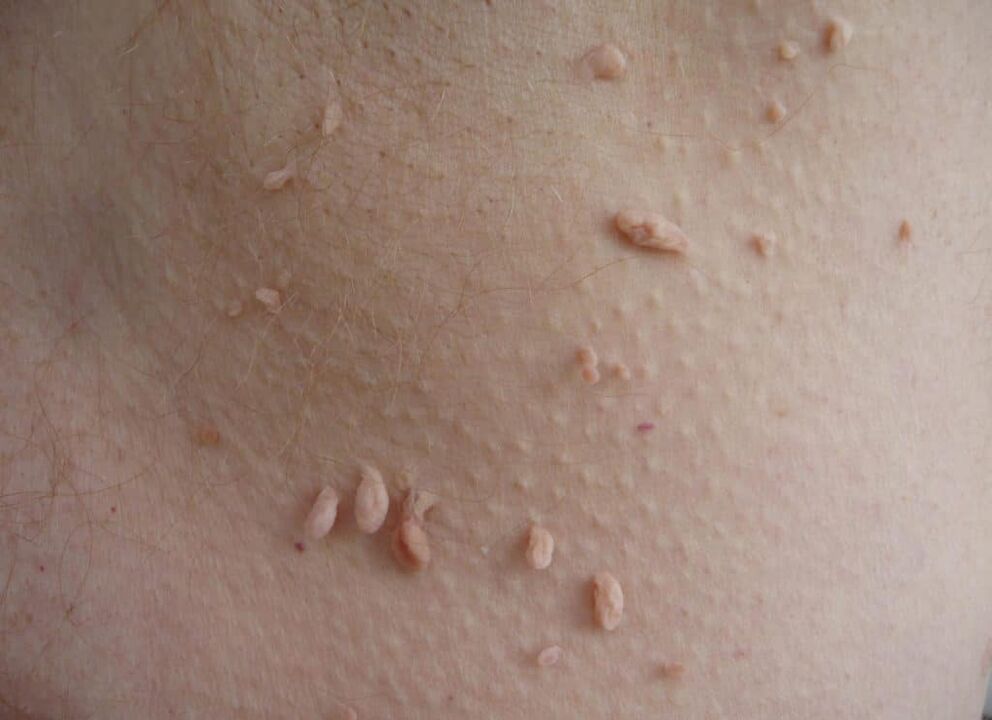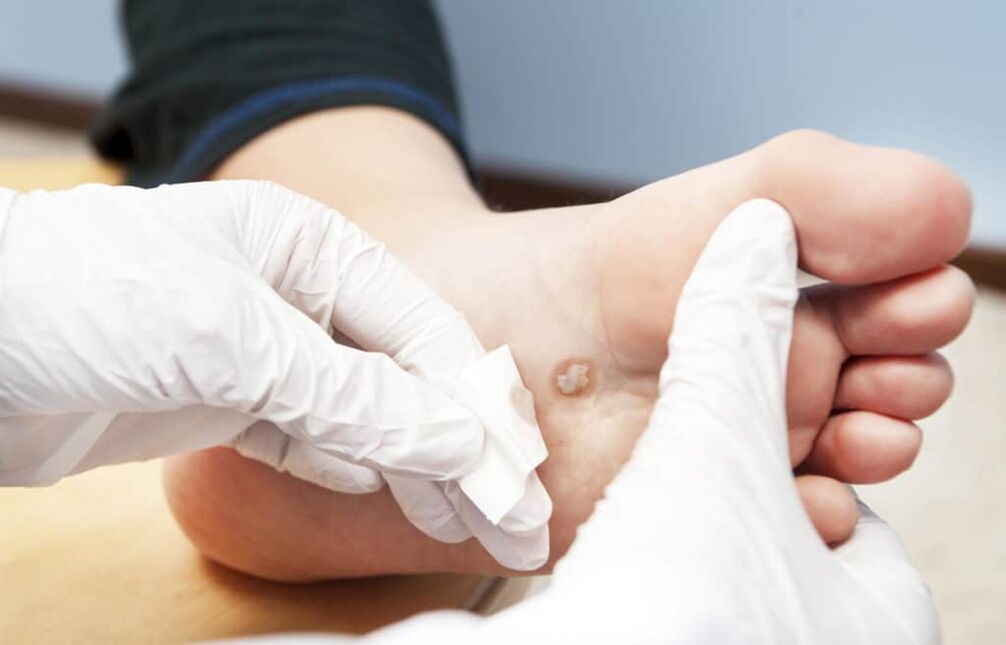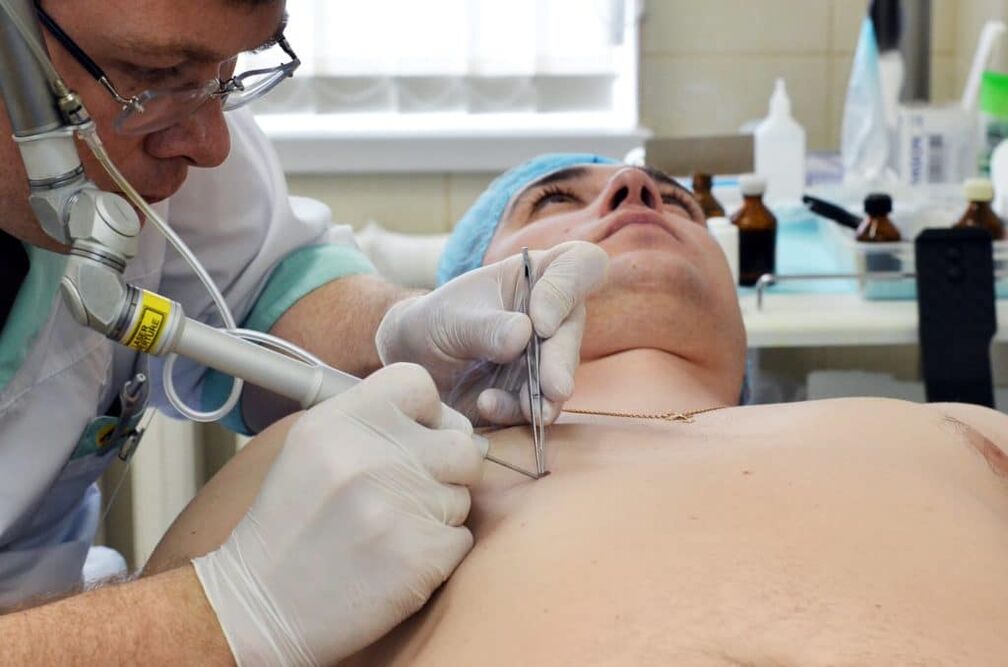Warts are benign skin growths that appear on many different parts of the body.They occur in both children and adults and cause a lot of inconvenience to the sufferer with their unsightly appearance and discomfort when injured.What causes warts and can their appearance be prevented?
Causes of warts

HPV can be “acquired” from public bathrooms or saunas, or from nail technicians due to poor sterilization equipment.
The main cause of the appearance of warts is infection with the human papilloma virus (HPV), transmitted through household contact or sexual contact (except for corneal tumors that are formed due to age-related skin changes).The penetration of pathogens into the body of a healthy person occurs through skin that is injured in one way or another, and provoking factors can be:
- increased viral activity in carriers;
- Immunity drops sharply in healthy people.
From the moment of infection until the appearance of the first waves, it takes from 14 days to several years - during this time the virus does not bother the patient at all.HPV activation mainly occurs due to:
- changes in hormone levels due to medication, pregnancy, illness;
- emphasize;
- general deterioration of health due to illness;
- prolonged exposure to cold;
- overworked.
Why do warts appear on the body?
Warts (papillomas) on the body occur as a result of contact with a carrier of the human papilloma virus or his or her objects.Paths of infection can be different:
- use of the patient's personal belongings - towels, underwear and bed sheets, combs, dishes, personal hygiene products, etc.;
- touching common objects - railings, door handles, elevator buttons;
- Visit swimming pools, saunas and baths (especially without rubber sandals);
- unprotected sex with an infected person;
- clean crowded places;
- autoinfection (the appearance of warts on the body is due to frequent trauma during the mother's formation).
Why do warts appear on hands?
Warts on hands as well as on other parts of the body are caused by infection with the HPV virus.The cause of warts is physical contact with an infected person or that person's objects (for example, infection can occur from shaking hands).In this case, the following types of warts may develop:
- simple (vulgar)– painless growths with keratinized surfaces appear on the hands and fingers (their size increases over time);
- foreign language– simple types that form near the nail;
- flat (youth)– round nodules with a flat surface that appear on the back of the hands and the inside of the limbs below the elbow (usually seen in adolescents, but can also appear in adults).
Why do warts grow on feet?

The skin on your feet needs special care, as it is much easier for viruses to enter your body if your feet sweat easily.
Foot warts are painful growths that can grow.They appear on the heel or forefoot due to infection with the HPV virus.The causes leading to the development of the disease are:
- reduced immunity;
- the presence of diseases that lead to impaired blood supply to the lower limbs - varicose veins, diabetes mellitus;
- wearing uncomfortable, tight or poor quality shoes (made from artificial materials);
- emphasize;
- increased foot sweating;
- sleep disorders;
- vitamin deficiency;
- dry skin.
Why do warts appear on fingers?
Warts on fingers appear due to direct contact with a person infected with the HPV virus or objects that that person uses.It could be shaking hands, touching the handrail on the subway, wearing someone else's bathroom slippers, etc.As a rule, vulgar warts and plantar warts are transmitted in the described way.
Why do warts appear on the genitals?
The HPV virus causes the development of warts in the genital area, perineum and anus (condylomas), transmitted through unprotected sex.Without proper treatment, the number of genital warts will increase due to constant trauma, which in turn leads to cauliflower-like formations.
How do warts start to develop?
When activated in the human body, human papillomavirus attacks skin cells, which is accompanied by their excessive division and tissue proliferation (at this time warts begin to develop).
Attention!Adequate treatment of the pathology at an early stage allows you to return the virus to its "dormant" state and prevent further spread of formed cells throughout the body.
Are warts dangerous?
Warts are benign tumors that are unlikely to cause serious harm to human health.However, they still need treatment.This is explained:
- high degree of spread of formations and, accordingly, their rapid spread on the skin;
- risk of secondary infection due to accidental damage to growth;
- risk of malignancy (transformation into cancerous tumors);
- risk of infecting others.
Diagnose

Wart treatment should only be performed under the supervision of a dermatologist.
The diagnosis is made by a dermatologist based on clinical manifestations.Additional studies, including DNA typing, are rarely required.The main signs of warts are:
- lack of leather pattern on the surface;
- the presence of blackheads (clogged capillaries);
- bleeding due to trauma.
During the examination, other skin pathologies are excluded.In difficult cases, a biopsy followed by histological examination of the wart tissue may be performed.
Treatment
Despite the fact that today there are many ways to remove warts, there is no way to eliminate the cause of their appearance - human papillomavirus.That is why in 30% of cases the disease recurs.
Treatment is needed when warts:
- rapid growth or itching;
- they are often injured;
- The number of formations increased sharply.
Treatment with medication
Medical treatment of warts is carried out comprehensively.Patients are prescribed:
- agents that have a chemical effect on formation;
- cytotoxic drugs;
- agent that affects the immune system - interferon.
Folk remedies
Treating warts with folk remedies is often applied when warts first begin to develop or when a small wart needs to be removed.In the majority of cases, the following formulas are used for this purpose.
- Garlic.Cut fresh garlic cloves in half and use half of the slice on the wart.Treatment is carried out twice a day.
- Garlic pieces.A plate is cut from a garlic clove according to the size of the shape, applied to the growth and fixed with plaster.The operation is performed before going to bed.In the morning, remove the garlic.
- Garlic powder.Garlic is ground in a blender.One teaspoon of porridge is mixed with the same amount of melted lard and four teaspoons of vinegar.The finished product is placed on a piece of tape, glued to the surface of a previously steamed mold, covered with polyethylene, fixed with a bandage and wrapped in something warm.
- Garlic bread.Garlic is pureed.Acetic acid and flour are added to the pulp, the dough is kneaded and a flat cake is formed.At night before going to bed, a cake is applied to the wart, covered with polyethylene and fixed with plaster.
Other methods

There are other more effective ways to remove warts.These include:
- cold destruction;
- electrocoagulation;
- laser coagulation;
- surgical excision.
Cryoablation is a procedure that involves freezing the wart with liquid nitrogen.The substance is applied to the surface of the system using a tampon attached to a wooden stick or a special cryotherapy device.The freezing process lasts 10-30 seconds, after which the growth turns white and becomes dense.After an hour, a blister appears on the skin, which eventually turns into a scab.
Electrocautery is a method of removing warts using electric current.The formation is ablated using a thin ring under high-frequency electric current, which prevents bleeding and disinfects the tissue.The procedure is performed under local anesthesia.A crust forms at the site of the wart and falls off after seven days.If cancer is suspected, the excised tissue will be sent for histological testing.
Electrocautery is based on the burning of pathological tissues with an electric current, as a result of which skin cells die.
Laser coagulation involves cutting the wart with a laser.The formation is removed layer by layer under local anesthesia.A small indentation remains at the growth site and heals after a few weeks.
Wart excision surgery is used to remove large or fused warts.The growth is removed with a scalpel under local anesthesia.After excision, the edges of the wound are sutured with cosmetic threads and the biomaterial is sent for histological examination.A thin scar remains at the site of the wart.
These manipulations are performed exclusively in a hospital environment.
What to do if warts grow after removal?
Recurrence of the disease indicates activation of human papillomavirus in the body.If the warts reappear, they should be removed and measures taken to strengthen the immune system.
You can only begin to remove the growth after visiting a doctor and confirming the benign nature of the wart.On the other hand, removal by conventional methods will cause many serious health problems.

























